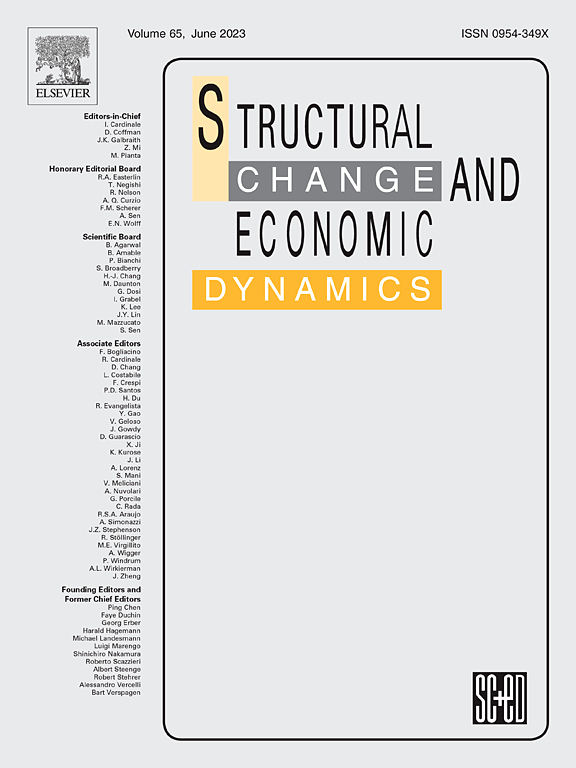Innovation and industry growth under private and public ownership: non-creative destruction versus welfare maximisation
IF 5.5
2区 经济学
Q1 ECONOMICS
引用次数: 0
Abstract
We analyse the impact of ownership, market structure, and quality of governance on sustainable industry growth as driven by process innovations generated by salaried agents under asymmetric information. The agent faces uncertainty because of performance-related pay and random punishments, which can be imposed by the employer (as arguably in the case of Nokia’s demise as a producer of mobile phones) or by external forces. Intermediate concentration yields the highest growth when firms maximise profits, but innovation costs increase with the market size. This can lead to monopolisation, and hence to non-creative destruction. A welfare-maximising public monopoly outperforms the oligopoly, but not necessarily under bad governance. An oligopoly can reach reasonable growth, but only under stringent conditions if the discount rate is low. Public ownership might then be an attractive alternative, but interventions to improve governance and to ensure decent working conditions, job security, and long-termism may then be necessary. (#149)
公私所有制下的创新与产业增长:非创造性破坏vs福利最大化
我们分析了在信息不对称条件下,受薪代理人产生的流程创新驱动下,所有权、市场结构和治理质量对可持续行业增长的影响。代理人面临着不确定性,因为与绩效挂钩的薪酬和随机惩罚,这些惩罚可能是由雇主施加的(正如诺基亚作为手机生产商的消亡案例中所争论的那样),也可能是由外部力量施加的。当企业利润最大化时,中间集中度产生最高的增长,但创新成本随着市场规模的增加而增加。这可能导致垄断,从而导致非创造性破坏。福利最大化的公共垄断优于寡头垄断,但在治理不善的情况下未必如此。寡头垄断可以达到合理的增长,但只有在贴现率较低的严格条件下。到那时,公有制可能是一个有吸引力的选择,但改善治理、确保体面工作条件、工作保障和长期主义的干预措施可能是必要的。(# 149)
本文章由计算机程序翻译,如有差异,请以英文原文为准。
求助全文
约1分钟内获得全文
求助全文
来源期刊

Structural Change and Economic Dynamics
ECONOMICS-
CiteScore
9.60
自引率
4.90%
发文量
159
期刊介绍:
Structural Change and Economic Dynamics publishes articles about theoretical, applied and methodological aspects of structural change in economic systems. The journal publishes work analysing dynamics and structural breaks in economic, technological, behavioural and institutional patterns.
 求助内容:
求助内容: 应助结果提醒方式:
应助结果提醒方式:


